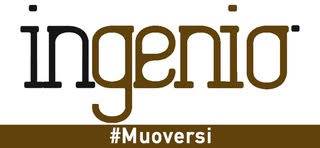The importance of monitoring system in urban underground projects as well as in long and deep tunnels design.
The importance of monitoring system in urban underground projects as well as in long and deep tunnels design.
Two indian case histories. In questa nota si sottolinea la rilevanza progettuale del sistema di monitoraggio per le opere in sotterraneo, prendendo spunto da due recenti casi di studio analizzati dalla Geodata Engineering nell’ambito della progettazione costruttiva di tunnel lunghi e profondi sotto l’Hymalaya e di metropolitane urbane nell’Altopiano del Deccan, in India. Il primo caso, relativo ai 9 km del Chenani-Nashri Tunnel, rappresenta un chiaro esempio della rilevanza del ruolo del Progettista in cantiere, in grado di interpretare in tempo reale i risultati del sistema di monitoraggio, installato sia sulla canna principale sia sulla galleria di servizio, al fine di fornire una corretta interpretazione sul reale comportamento dell’ammasso roccioso, sui rischi connessi al suo disturbo durante lo scavo e sull’appropriata individuazione delle sezioni tipo da installare e delle eventuali contromisure. Il secondo caso presentato attinge invece dalla recente esperienza della Linea UG-1 della metropolitana di Bangalore, dove i dati delle sezioni di monitoraggio correttamente installate permottono di eseguire back-analises che consentono una ricalibrazione della modellazione numerica e conseguente ottimizazzione degli standard progettuali dei tunnel di linea scavati con sistema meccanizzato e delle opere puntuali (stazioni, pozzi e rampe) eseguiti con metodo cut&cover bottom-up.
Designing a monitoring plan in urban underground projects and in long and deep tunnels
The construction of new infrastructures in urban areas is cause of disturbs and settlements that might affect the surroundings. For this reason before constructing new underground structures in urban areas, an analysis of the possible induced effects is necessary. In particular, a continuous monitoring of the stress-strain behavior of soil and of the structures must guarantee the fast reaction to unexpected events by protecting the existing buildings from severe damages and by keeping all the excavation parameters inside the allowable limits.
Long and deep tunnels require as well quite an extensive monitoring system, particularly if the design methodology is taking into account its results in order to properly assess the rock mass behavior, assign the proper section type and consequently update the limit and alarm figures
The suggested method follows the criteria of the Flexible Design Approach, widely applied in the new engineering constructions (Fig.1). This approach requires the systematic monitoring of the works by a monitoring plan of the key parameters. Through the executed measures it is possible to:
• verify the design assumptions;
• optimize the design solutions to better fit with local conditions in order to guarantee safety of workers, budget and time of execution by managing the uncertainties.
In order to fulfil these scopes, it is necessary to define threshold values for the key parameters. In case of measures exceeding these limits and depending on the possible reasons for these unexpected values, some counter-measures to be immediately applied are defined. These counter-measures must guarantee the safety of the workers and of the structures under construction and already in place.


Figure 1. Comparison between monitoring readings and numerical analysis results developed with Phase2 software (above). Yielded elements and N-M primary lining structural verification (below) as per back-analyses.
Articolo tratto dagli Atti del 4° IAGIG, L'Aquila, 11-12 Aprile 2014
http://www.iagig.unisa.it/iagig_2014/iagig2014atti

Tunnel e Gallerie
News e approfondimenti riguardanti il tema delle gallerie e delle costruzioni in sotterraneo: l’evoluzione normativa, gli strumenti digitali per...
